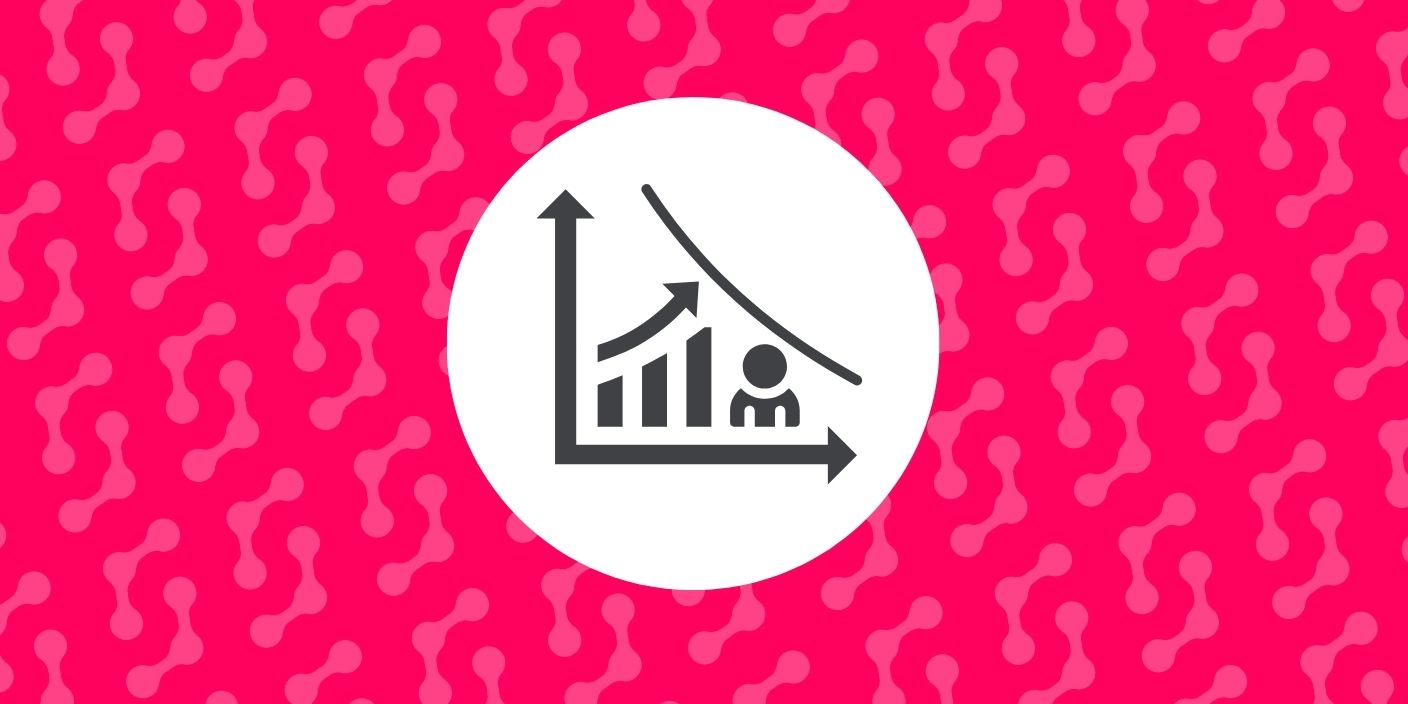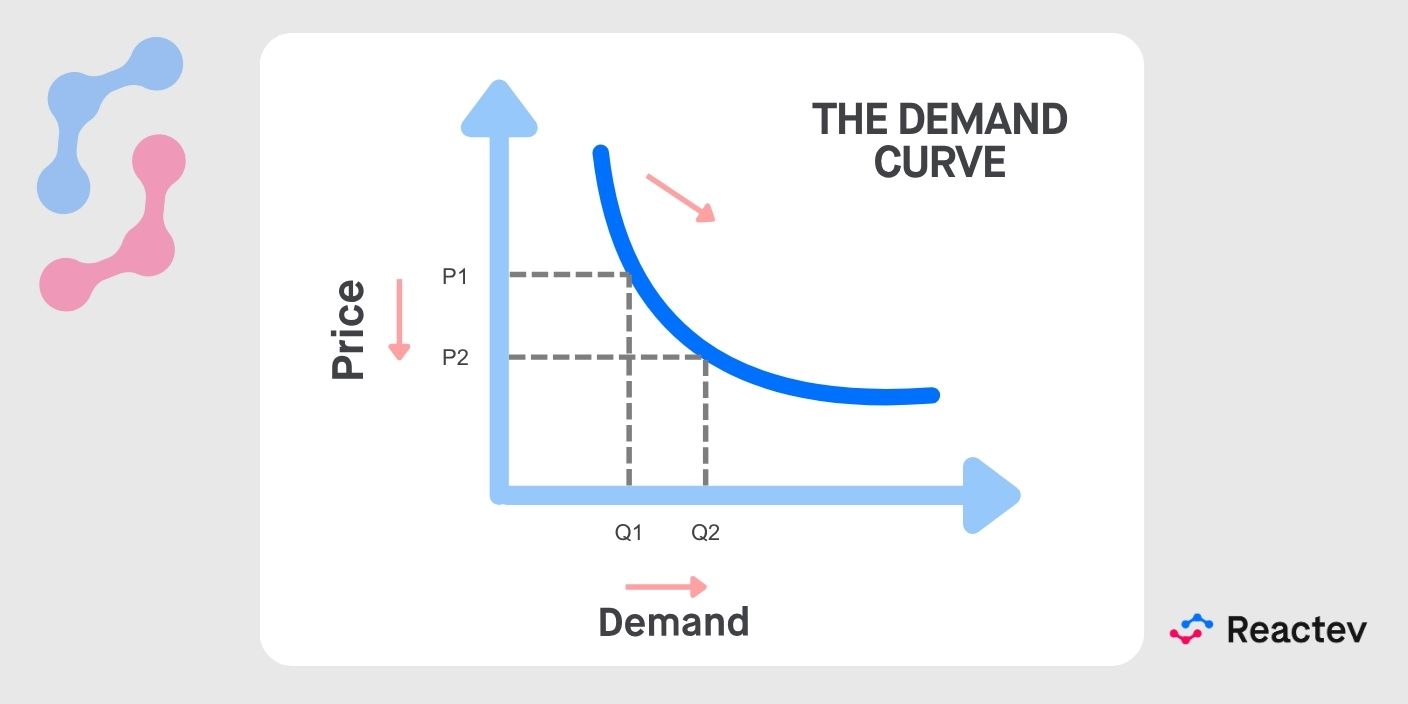
The Demand Curve: How to Use It for Smart eCommerce Pricing
07/24/2025 - Dynamic pricing
Setting the right price is one of the biggest challenges for any eCommerce business. Price too high, and you might scare away buyers. Price too low, and you could erode your profit margins. In this complex balancing act, the demand curve emerges as a fundamental—yet often underutilized—economic tool. Its analysis goes beyond academic theory; it's the key to understanding how your customers will react to every price change and, ultimately, to optimizing your pricing strategy intelligently.
The demand curve isn't an obsolete academic concept; it's the map that, when read with the right technology, guides every pricing decision toward maximum profitability.
What is the Demand Curve? A Graph That Predicts Your Sales
The demand curve is a graph that illustrates the relationship between a specific product's price and the quantity of that product consumers are willing to buy at that price over a given period. On the graph, the vertical axis (Y) represents the price, and the horizontal axis (X) represents the quantity demanded.
This concept is rooted in the law of demand, a fundamental principle stating that, all else being equal, as the price of a good or service increases, the quantity demanded will decrease, and vice versa. For a business, this chart is a powerful visual tool for anticipating how pricing decisions will impact sales volume.
What is the demand curve and what is it used for? The demand curve is a graph showing the quantity of a product consumers will purchase at various price points. It helps eCommerce businesses:
Understand customer price sensitivity.
Predict how price changes will impact sales.
Build a price optimization strategy to maximize revenue or profit.

Factors That Shift the Demand Curve (Beyond Price)
It's crucial to understand a key distinction: a change in your product's price causes a movement along the existing curve. However, external factors can shift the entire curve to the right (an increase in demand) or to the left (a decrease in demand) at all price levels.
Prices of Substitute and Complementary Goods
Your competitors' actions have a direct impact on your demand. If a key competitor selling a substitute product lowers their prices, your demand curve might shift to the left as some customers opt for the cheaper alternative. Conversely, if you sell a complementary good (like cases for a specific phone model) and the price of the main product (the phone) drops, demand for your product could increase, shifting the curve to the right.
Consumer Income
The purchasing power of your target audience is a critical factor. During periods of economic growth, disposable income rises, and the demand curve for many goods—especially higher-value items—shifts to the right. In a recession, the opposite occurs as consumers prioritize essential products, contracting demand for other items.
Trends and Consumer Preferences
Fashion trends, successful marketing campaigns, or influencer endorsements can make a product significantly more desirable. This boost in consumer preference causes a clear shift in the demand curve to the right, meaning customers are willing to buy more units even at the same price.
The Direct Link: The Demand Curve and Price Elasticity
The shape, or slope, of the demand curve reveals a concept vital for any price strategist: elasticity. The price elasticity of demand measures how sensitive the quantity demanded is to a change in price.
Elastic demand (a flatter curve) means a small change in price causes a large change in the quantity demanded. This is typical for products with many substitutes or non-essential goods.
Inelastic demand (a steeper curve) means a price change has a very small impact on the quantity demanded. This often occurs with necessities or products with strong brand loyalty.
Understanding whether your product's demand is elastic or inelastic is fundamental before implementing any price changes. To delve deeper into this topic, you can read our article on the difference between elasticity and inelasticity.
Practical Applications: How to Use the Demand Curve in Your Business
Let's translate theory into profitable actions. Demand analysis allows eCommerce businesses to make far more strategic decisions.
Finding the Optimal Price to Maximize Revenue
The optimal price isn't always the highest possible price. It's the sweet spot that perfectly balances price and sales volume to maximize total revenue (Price x Quantity). A small, data-driven adjustment can have a huge impact. According to McKinsey, a 1% price increase can boost operating profits by 8.7%, underscoring the critical importance of this decision.
Predicting the Impact of a Discount Campaign
Imagine a fashion eCommerce store needing to liquidate its inventory of winter coats at the end of the season. Instead of applying an arbitrary 50% discount, analyzing the demand curve allows for modeling different scenarios. It might reveal that a 25% discount is enough to attract a sufficient customer segment to clear the inventory, thereby maximizing revenue and avoiding the deep margin cuts of a more aggressive discount.
Want to stop interpreting graphs and start automating your pricing decisions? Discover how Reactev's Price Optimization Software can calculate the optimal price for every product you sell.
The Challenge: Analyzing Demand for Thousands of Products at Once
Analyzing the demand curve for a single product is a useful academic exercise. But what happens in a real-world eCommerce environment with a catalog of thousands of SKUs, where competitor prices, inventory levels, and market trends change daily?
Applying this theory manually at scale is, simply put, unfeasible. The complexity of calculating thousands of individual demand curves, while considering cross-product elasticity and constantly shifting external factors, exceeds human capability and that of any spreadsheet.
This is where technology becomes essential. Price optimization software like Reactev doesn't just "interpret" a static graph. It uses AI algorithms to dynamically calculate and recalculate the demand curve for every product in your catalog. It considers complex, real-time variables to recommend the perfect price that aligns with your business goals, whether that's maximizing margins, liquidating inventory, or gaining market share. This technology turns economic theory into a powerful automation tool, thanks to our Demand Forecasting Software.
Frequently Asked Questions about the Demand Curve
What's the difference between a movement along and a shift of the curve?
A movement along the curve is caused only by a change in the product's own price. A shift of the entire curve (left or right) is caused by external factors other than its price, such as changes in consumer income, competitor prices, or new trends.
Do all products have the same demand curve?
No. Each product has its own unique demand curve. Its shape (slope) depends on its elasticity. Necessities will have a very inelastic (steep) curve, while luxury goods or products with many competitors will have a very elastic (flat) curve.
What does a vertical demand curve mean?
A vertical demand curve represents perfect inelasticity. This is a theoretical situation where the quantity demanded does not change, no matter how much the price changes. It's often used to represent life-saving medicines or absolute necessities with no substitutes.
Is it possible to calculate the demand curve for my entire catalog manually?
For an extensive catalog, it is practically impossible to do so accurately and efficiently. The sheer volume of data to process (historical prices, sales, inventory, competitor prices, seasonality) and the complexity of the calculations require specialized software to obtain reliable and actionable results.
From a Theoretical Curve to Automated Profitability
The demand curve is much more than a graph in a textbook; it's a strategic tool that holds the answers to the most critical questions about your pricing policy. Understanding its fundamentals gives you a clear view of consumer behavior, but its true power in modern eCommerce is only unlocked through technology.
Automation and artificial intelligence are the bridge connecting economic theory to real, daily profits. Moving beyond manual interpretation and adopting solutions that calculate and react to demand in real-time is the definitive step to turning your pricing strategy into your greatest competitive advantage.
Request a demo of Reactev and let us show you how our platform uses demand forecasting to optimize prices for your entire catalog.
Category: Dynamic pricing
